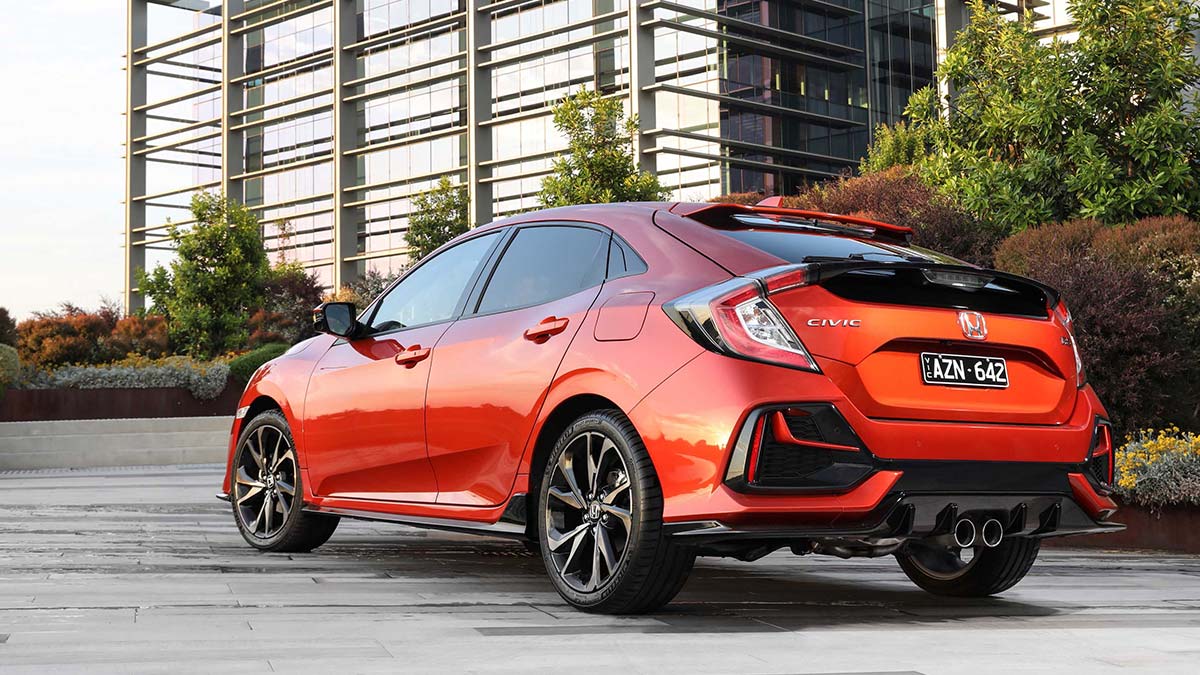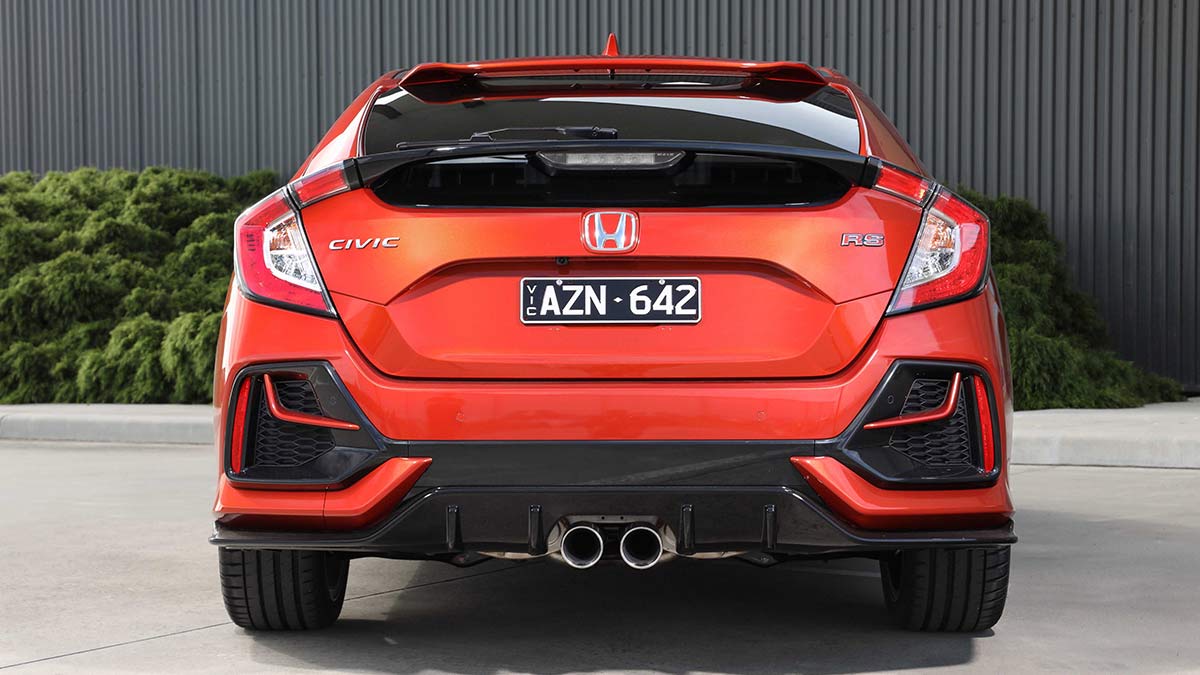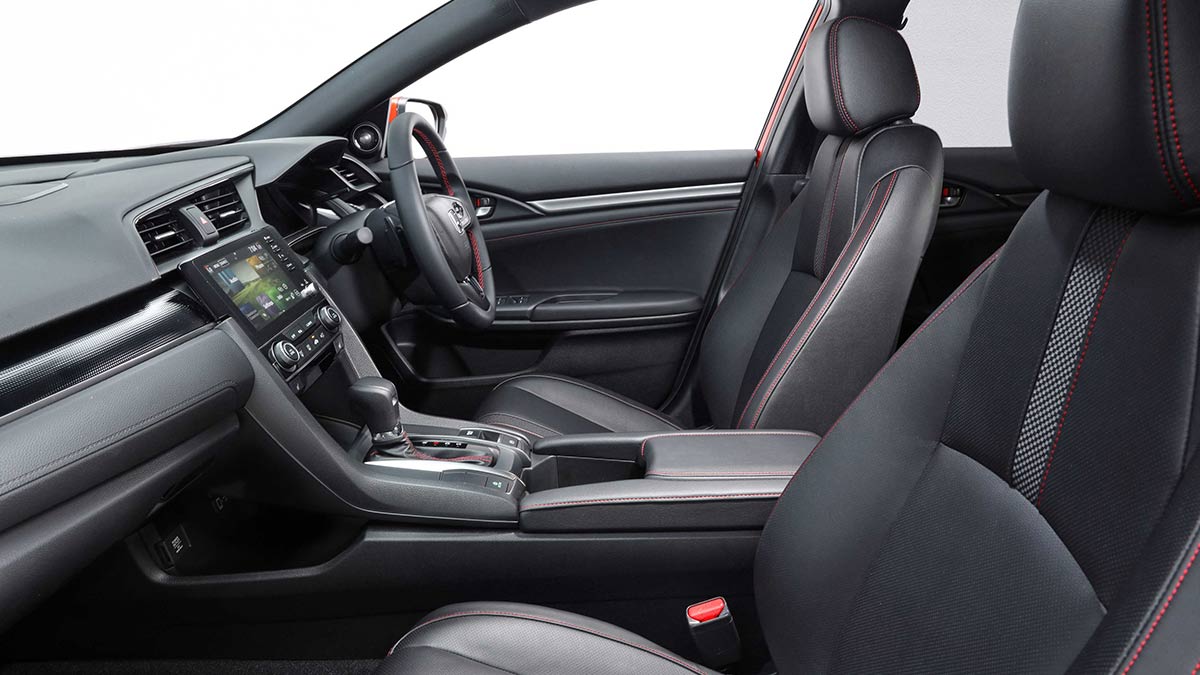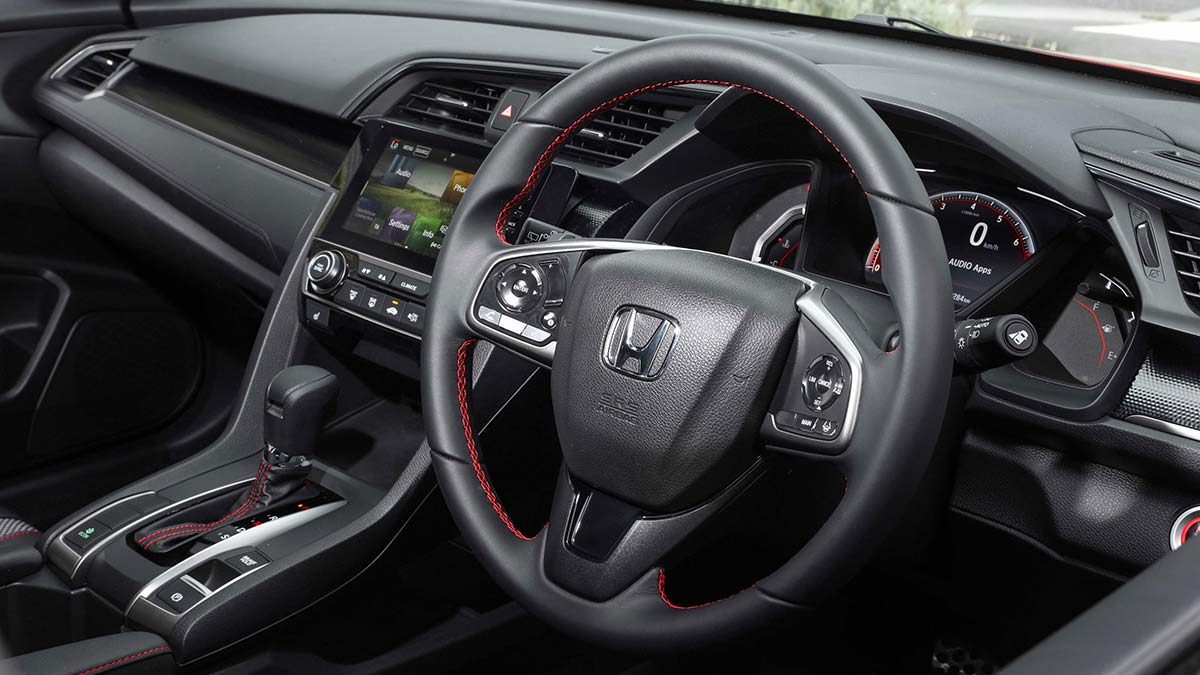The ninth-generation Toyota HiLux has arrived, bringing with it a futuristic forward exterior design, more safety and tech and the same rugged capability owners love. Will the updates tempt private buyers away from the Ford Ranger or are they just enough to keep fleets onside?
Honda Civic RS hatch 2020 road test review
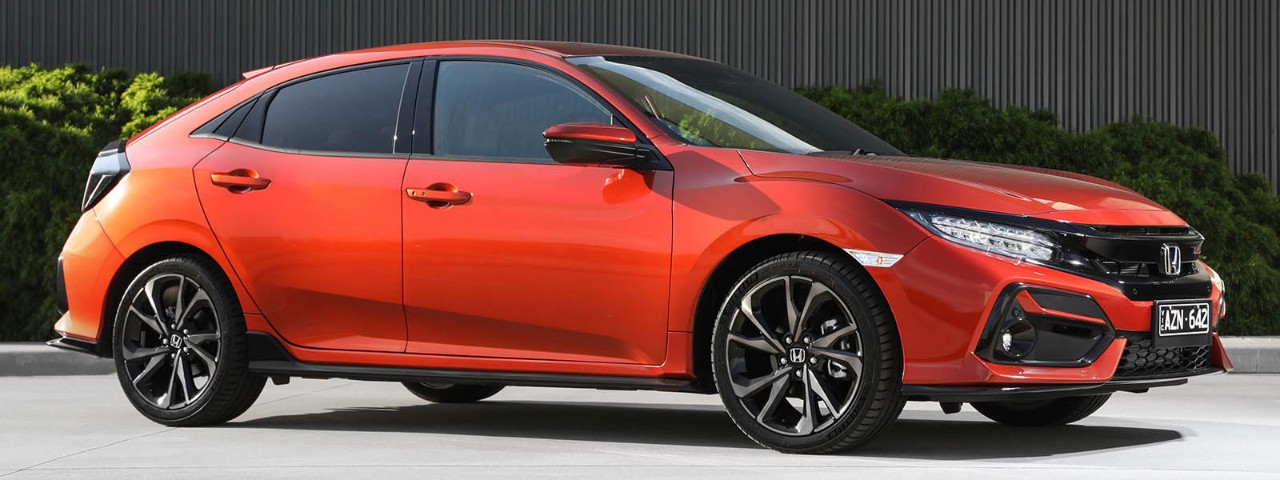
We put the impressive updated Honda Civic RS hatch through its paces.
If you want an example of how much cars have changed in the past few decades, take a look at the Honda Civic. The iconic original from 1973 was a tiny runabout with a 40kW engine, but its popularity propelled Honda into the big time globally. Nearly 50 years later, it has evolved into one of the biggest small cars on the market and it’s offered with technology that was unheard of in the ’70s. It might not have had the same impact as the original, but there’s a lot to like about the recently updated Civic hatch.
Thumbs up
Sprightly turbocharged engine, sharp handling, underrated dynamic prowess, interior space, additional safety gear added.
Thumbs down
Firm ride, noisy cabin, droning CVT, blind spot from large C-pillars, busy interior design.
In this article
Price and positioning
Based on the tenth-generation model that lobbed in May 2016, Honda Australia launched a facelifted Civic hatch in early 2019 that ushered in revised styling and more standard safety gear on higher-grade variants. The Civic sedan and hatch are available in VTi, VTi-S, VTi-L, RS and VTi-LX grades ranging from $22,590 to $34,590 before on-road costs. The fire-breathing Civic Type R hot hatch is also available from $54,990.
Our $34,590 RS test car looks aggressively sporty but aside from wider tyres for improved grip, a rear diffuser, dual central exhaust, exclusive paint options and red seat stitching, there are no mechanical tweaks to increase performance over other Civic variants. Rival sporty-looking hatchbacks include the Ford Focus ST-Line ($29,490), Hyundai i30 N Line ($30,040) and Kia Cerato GT ($33,490).
The RS has a healthy standard equipment list and isn’t missing anything obvious. In this company the Kia has the edge in terms of value, but not by much.
Safety first
The five-star ANCAP-rated Civic RS is now offered as standard with the Honda Sensing driver-assist package (see table below). It also has Honda’s neat Lane Watch system that lets drivers keep an eye on what’s happening in the left lane when indicating. The adaptive cruise control and lane-keeping aid worked well in most settings, but the latter can get quite close to the line marking before it activates.
The inside story
The hatch’s low-slung coupe silhouette and high-set centre console makes for a sportscar-like seating position. A big central storage bin houses two cup holders that you can move, adding to the flexibility of the cabin. Bottle storage in the doors is just okay and there’s a shelf under the gear shifter for phones and the like – but no wireless device charging.
Honda’s dashboard design is busy, but the layout is functional. The push-button controls for the central screen look dated, but it’s an easy system to navigate. The semi-digital instrument cluster can be customised to adjust the layout and background colours.
The front seats are mostly supportive but could do with more under-thigh cushioning. A big thumbs up for the chequered-flag inserts, red stitching and perforated leather-appointed trim.
Despite the split glass of the hatchback’s tailgate, visibility is good, although chunky C-pillars create a blind spot.
Head room up front is generous but watch your noggin when getting in and out of second row. The sloping roofline affects head room back there if you’re six foot or taller, and the high window line means the back seat is a little dark. There is, however, ample leg and knee room. Passengers must do without rear air vents and there’s just one map pocket on the driver’s side.
The boot’s wide load area is welcome, and the 60/40 rear split-fold seats fold almost flat, which makes it easier to load long objects. A temporary spare wheel is housed under the boot floor. The inclusion of the central dual exhaust means the RS boot is shallower than other Civic hatch variants – 340 litres versus 414 litres. It’s still a useful size but can’t beat Cerato’s huge 428 litres.
On the road
Honda’s 127kW/220Nm 1.5-litre turbocharged petrol powertrain is super responsive and likes to be pushed. The engine is so impressive that it’s easy to forgive the hint of turbo lag on take-off. However, the continuously variable transmission (CVT) drones in a way that newer systems from Toyota and Subaru don’t. Entry-grade Civics are offered with a 104kW/174Nm 1.8-litre naturally aspirated petrol engine, but the punchy 1.5-litre turbo is undoubtedly the pick of the range.
The Civic doesn’t receive as much acclaim for its dynamic prowess as sharp-handling hatchbacks like the Focus or VW Golf, but it should. The chassis is well balanced with no lateral movement, and the car feels planted to the tarmac on winding roads. The steering is precise, if a little artificial feeling.
It’s little surprise that the Civic Type R hot hatch is as good as it is given how impressive the regular Civic is.
The payoff for that go kart-like handling is a firm ride. This is a result of the dynamic suspension tune and grippy low-profile Michelin Pilot Sport 4 tyres. It’s not jarring, but it is apparent on inner-urban streets with speed bumps.
The RS is let down a little by the noisy cabin, which is boomy on coarse-chip roads. Honda could learn a thing or two from Mazda or VW about cabin insulation.
Our final fuel figure of 8.2 litres per 100 kilometres couldn’t match Honda’s official claim of 6.4L/100km.
|
Pricing |
List price: $34,590 before on-road costs. |
|---|---|
|
Drivetrain |
1.5-litre four-cylinder turbocharged petrol engine, continuously variable transmission, front-wheel drive. |
|
Fuel |
91 RON petrol, 47-litre tank |
|
Standard safety |
Five-star ANCAP rating, forward-collision warning, autonomous emergency braking, lane-departure warning, lane-keep assist, adaptive cruise control with low-speed follow, road-departure mitigation system, multi-angle reversing camera. |
|
Standard features |
Seven-inch colour touchscreen with Bluetooth, digital radio, Apple CarPlay/Android Auto, 12-speaker premium audio system, dual-zone climate control, leather-appointed seat trim, eight-way power-adjustable driver’s seat, LED auto-levelling headlights. |
|
Warranty |
Five-year/unlimited-kilometre warranty. Five-year/100,000-kilometre capped-price servicing plan. Servicing schedule every 12 months or 10,000 kilometres. |
